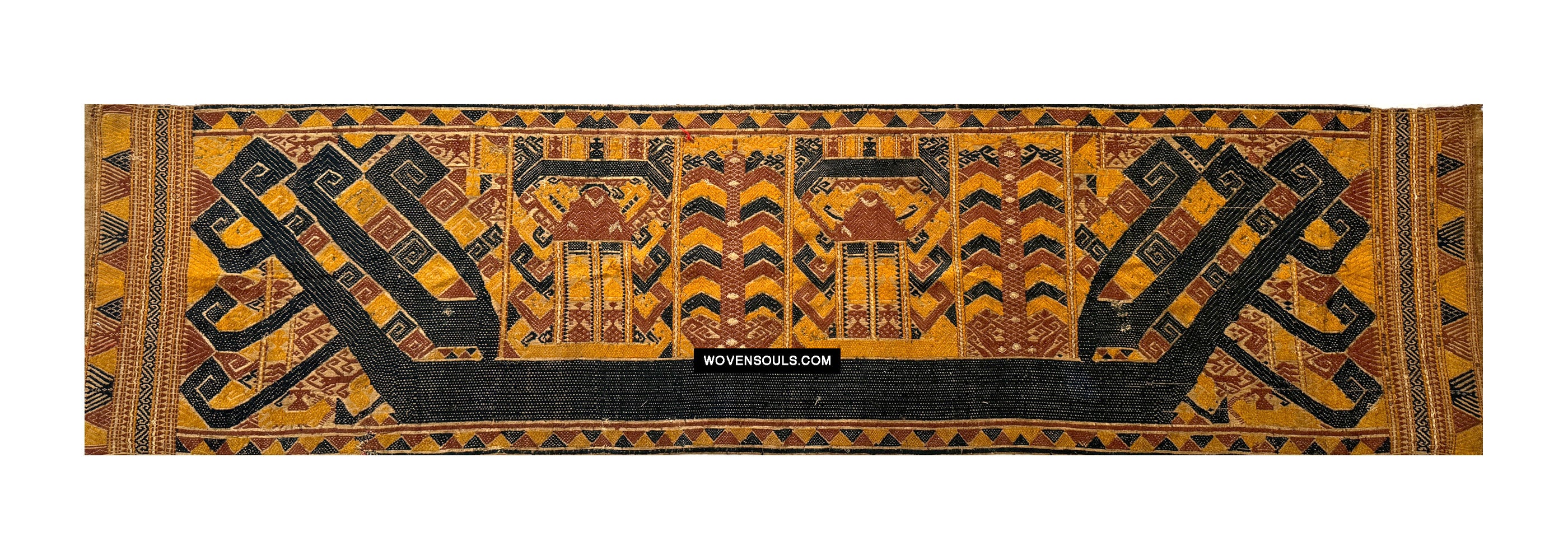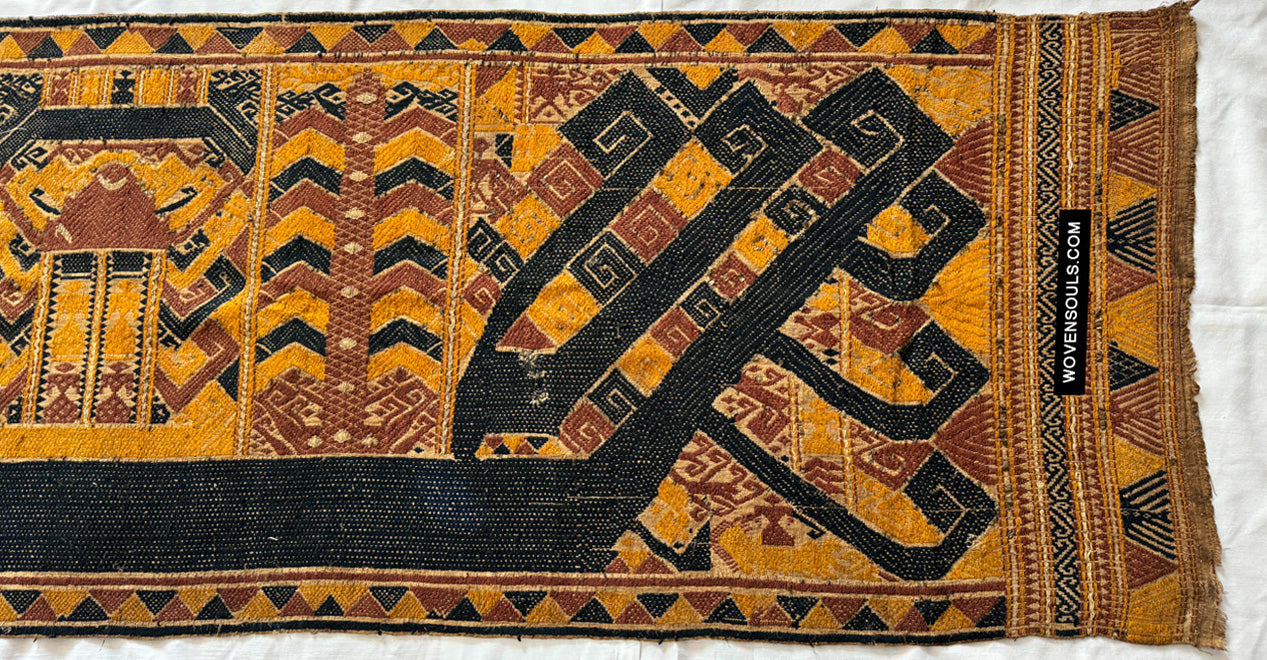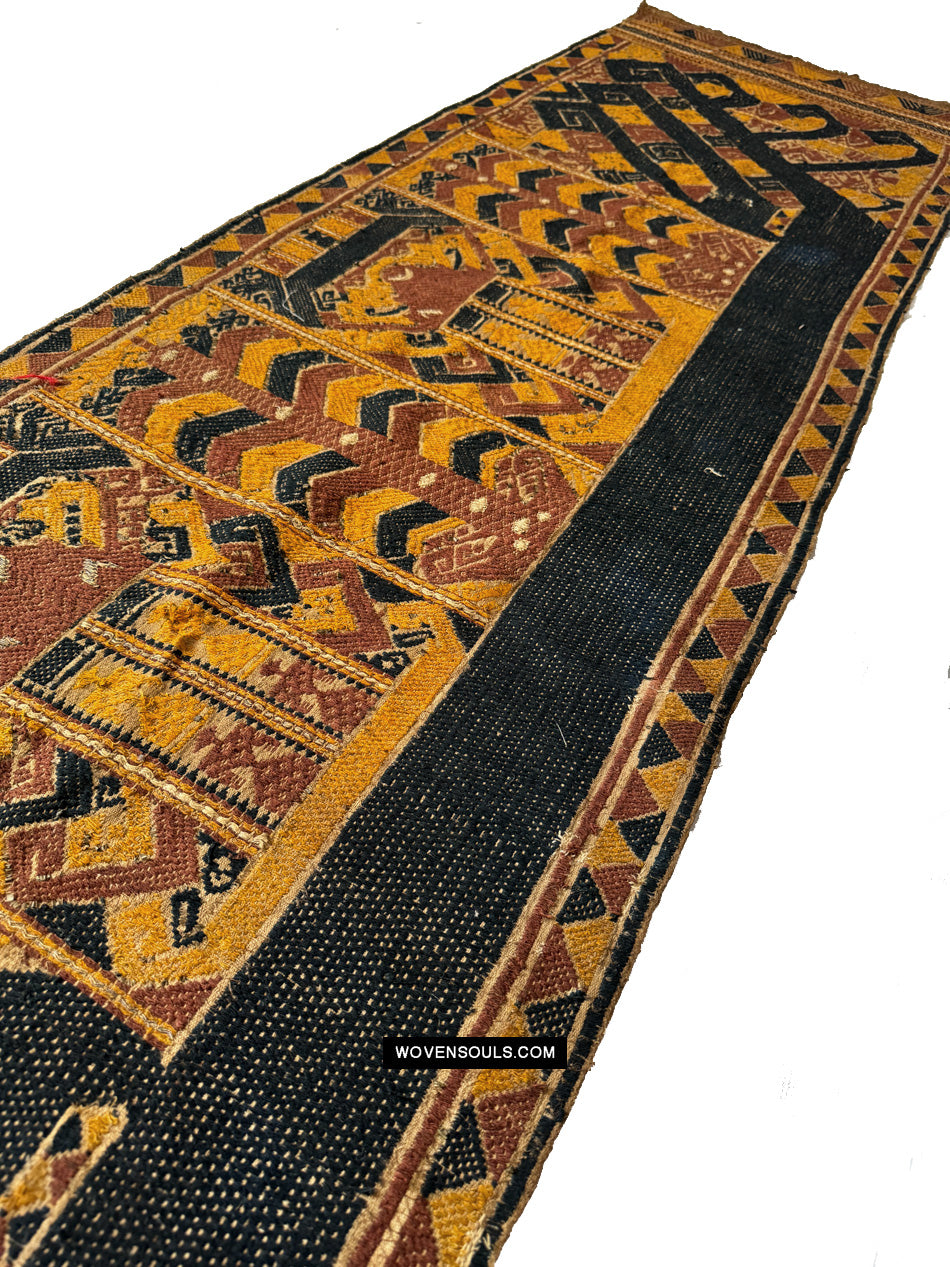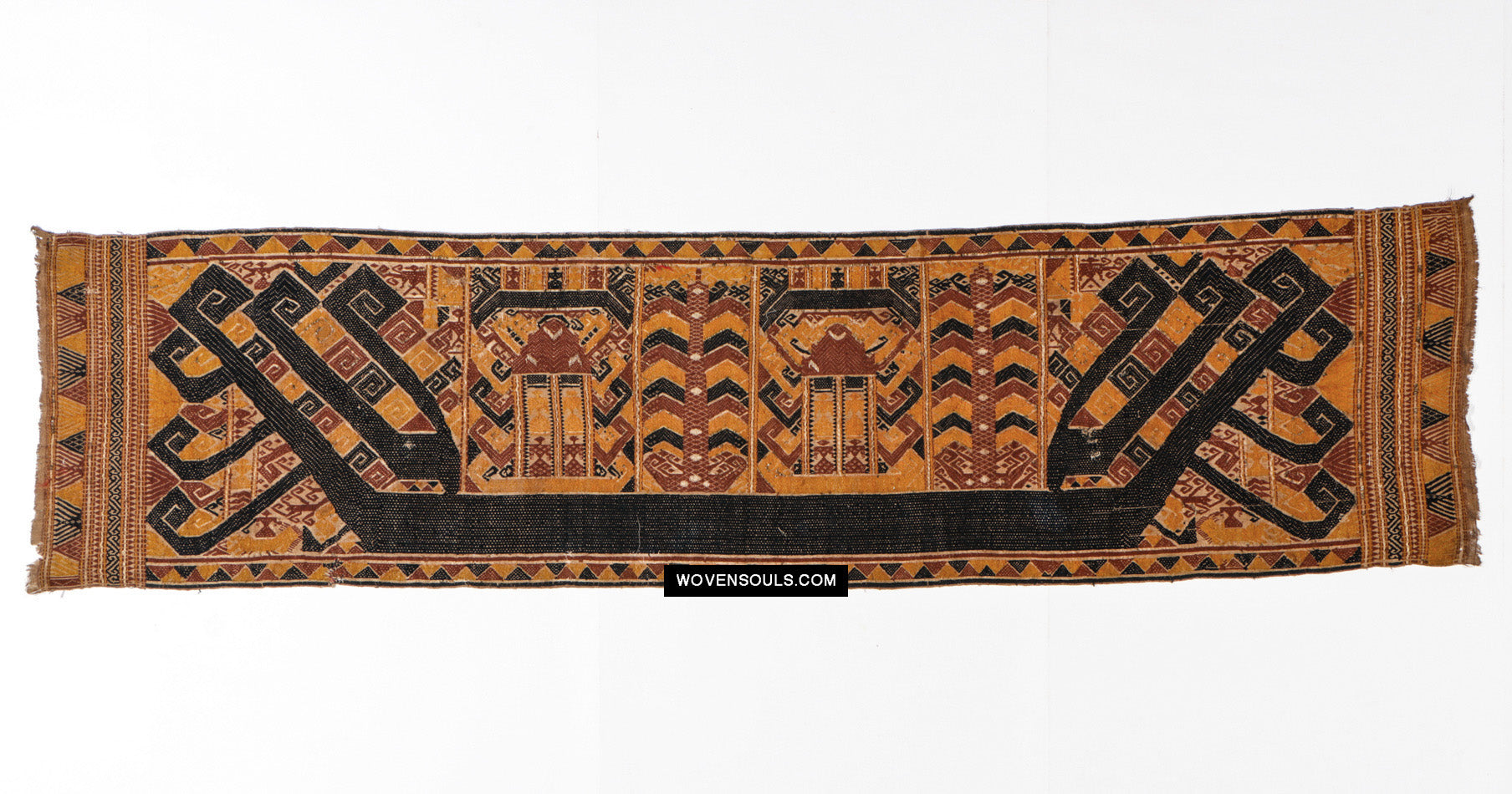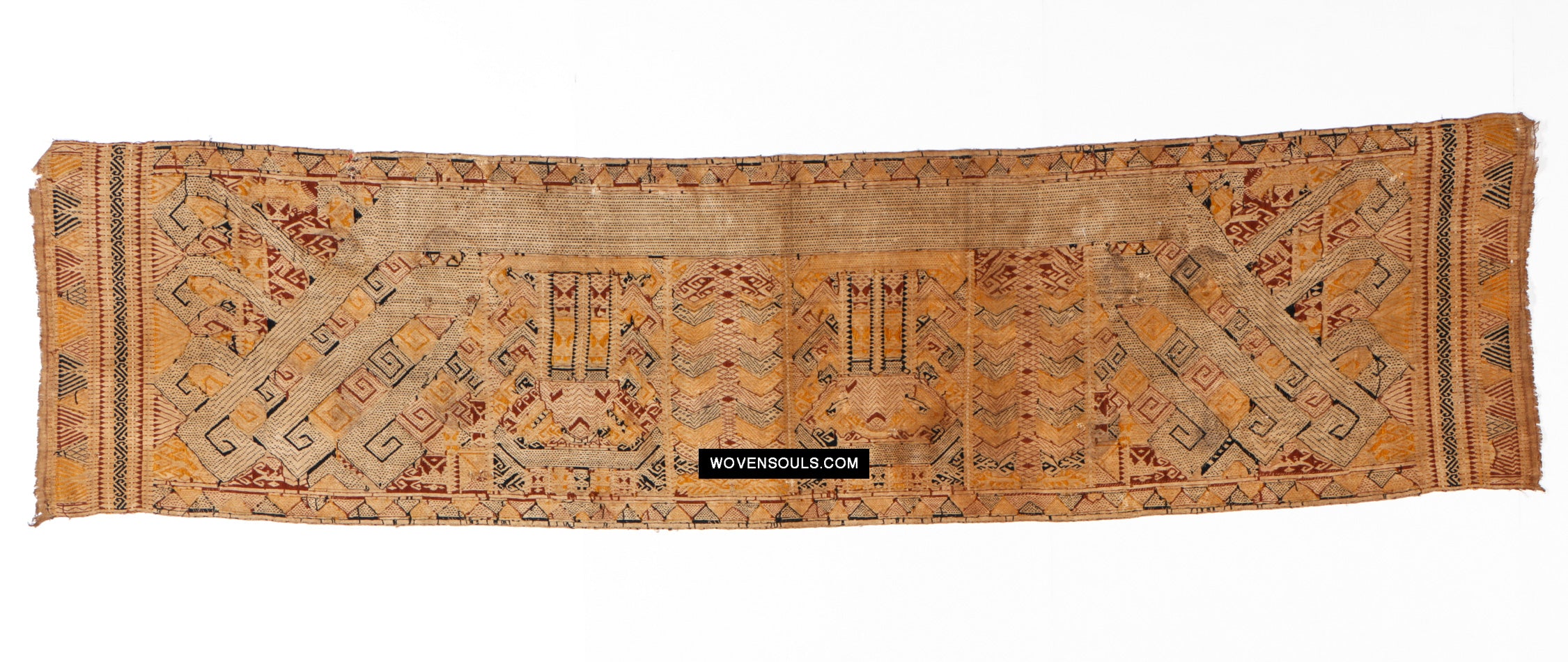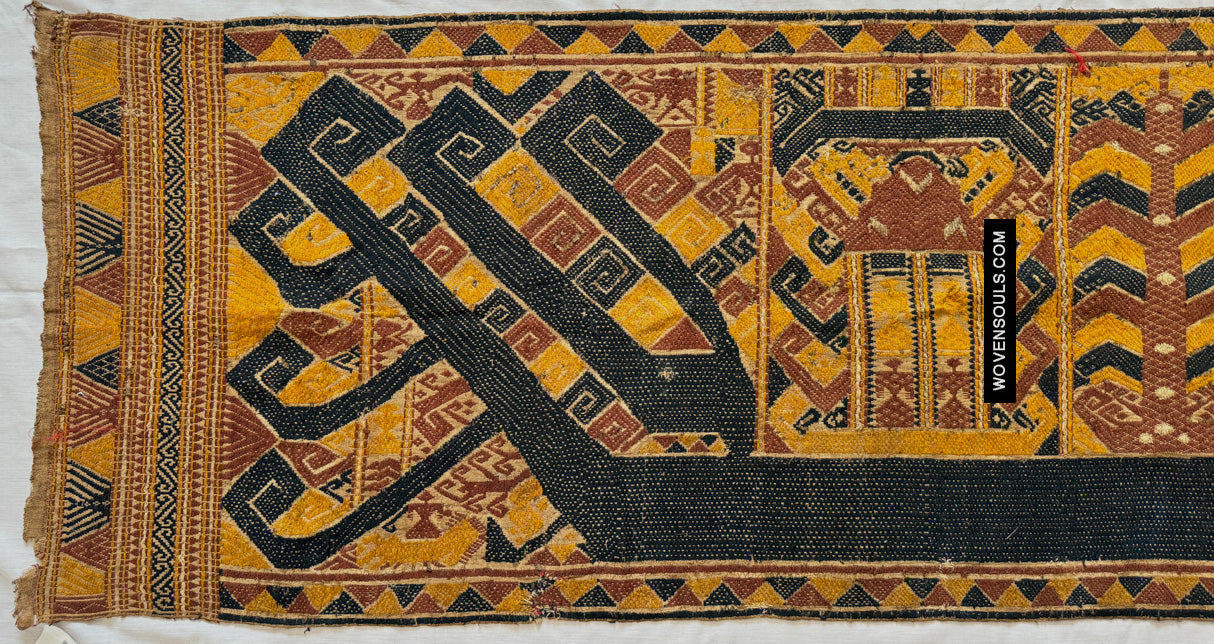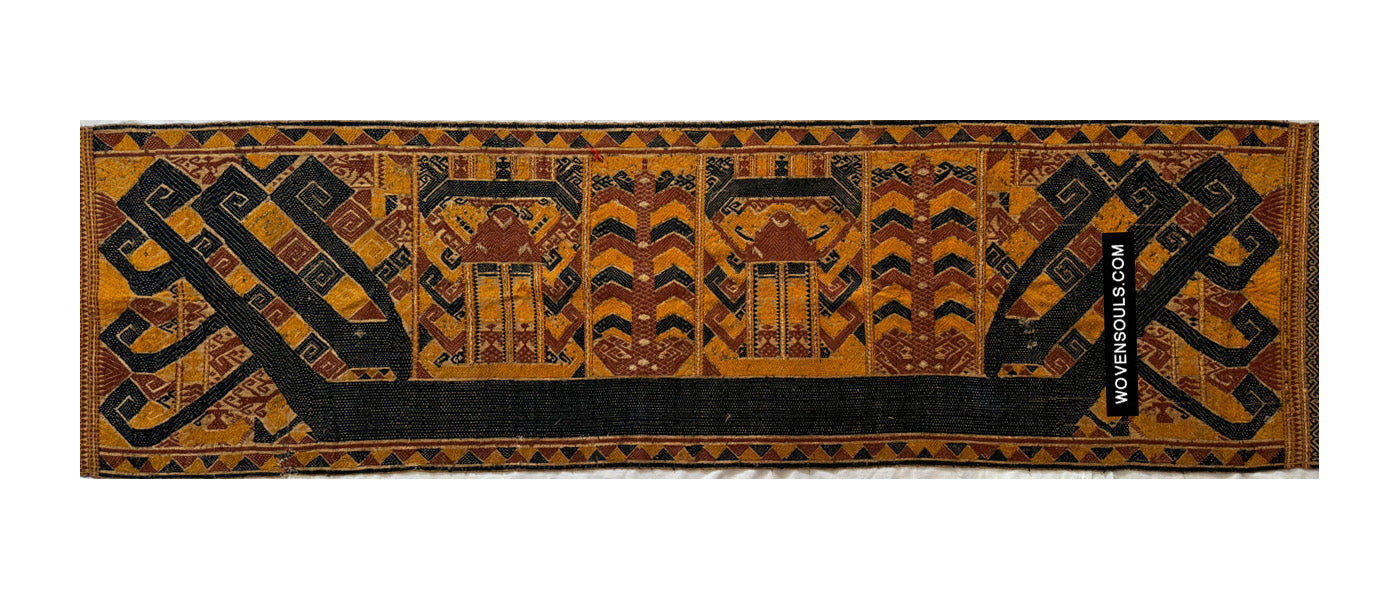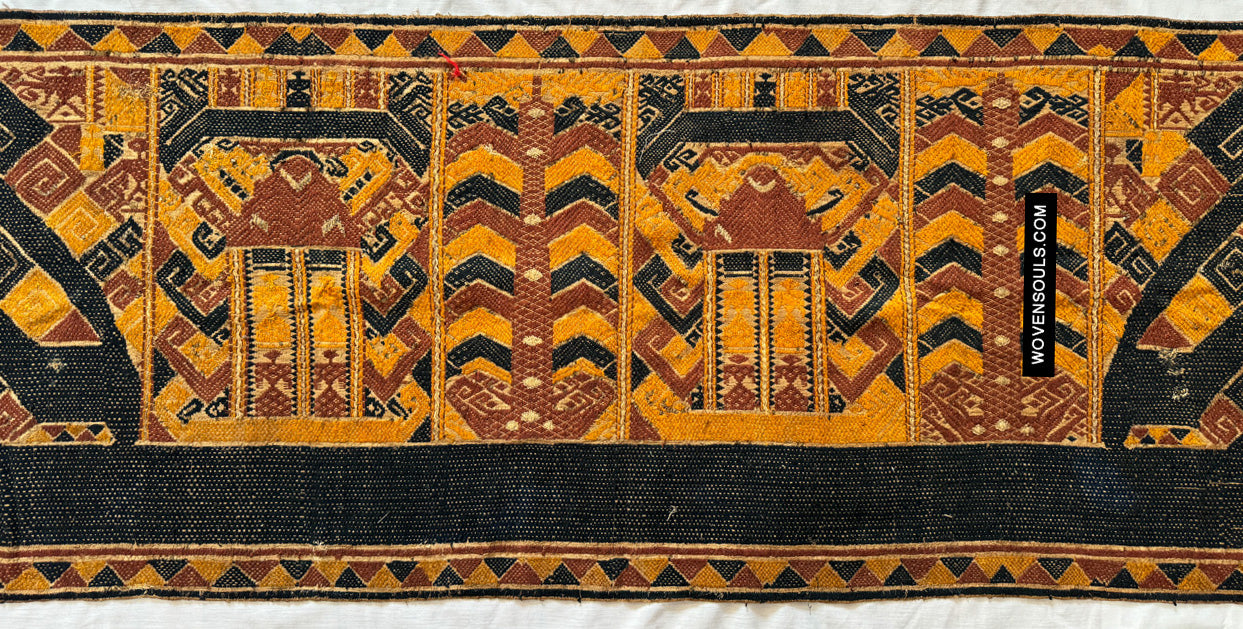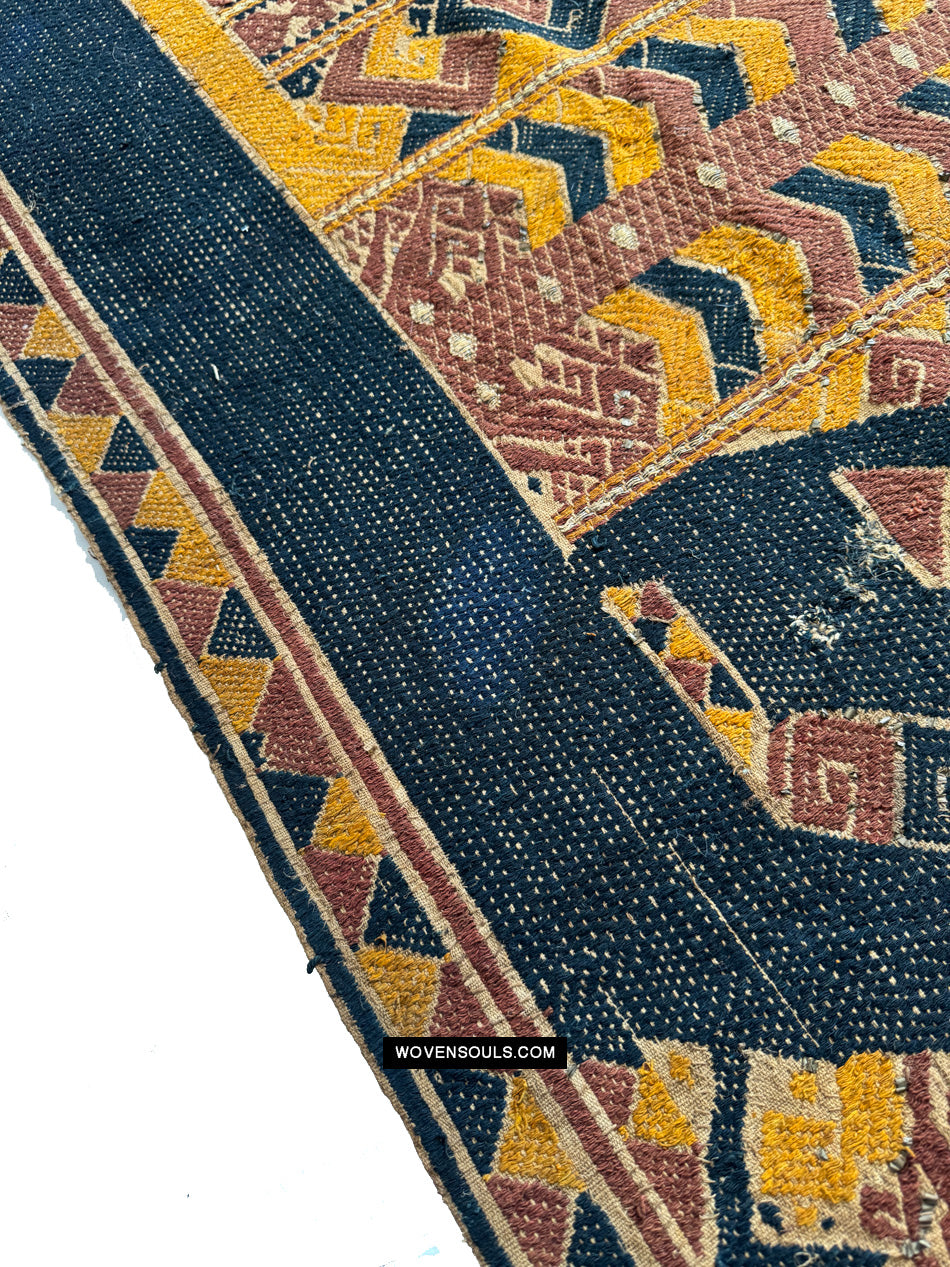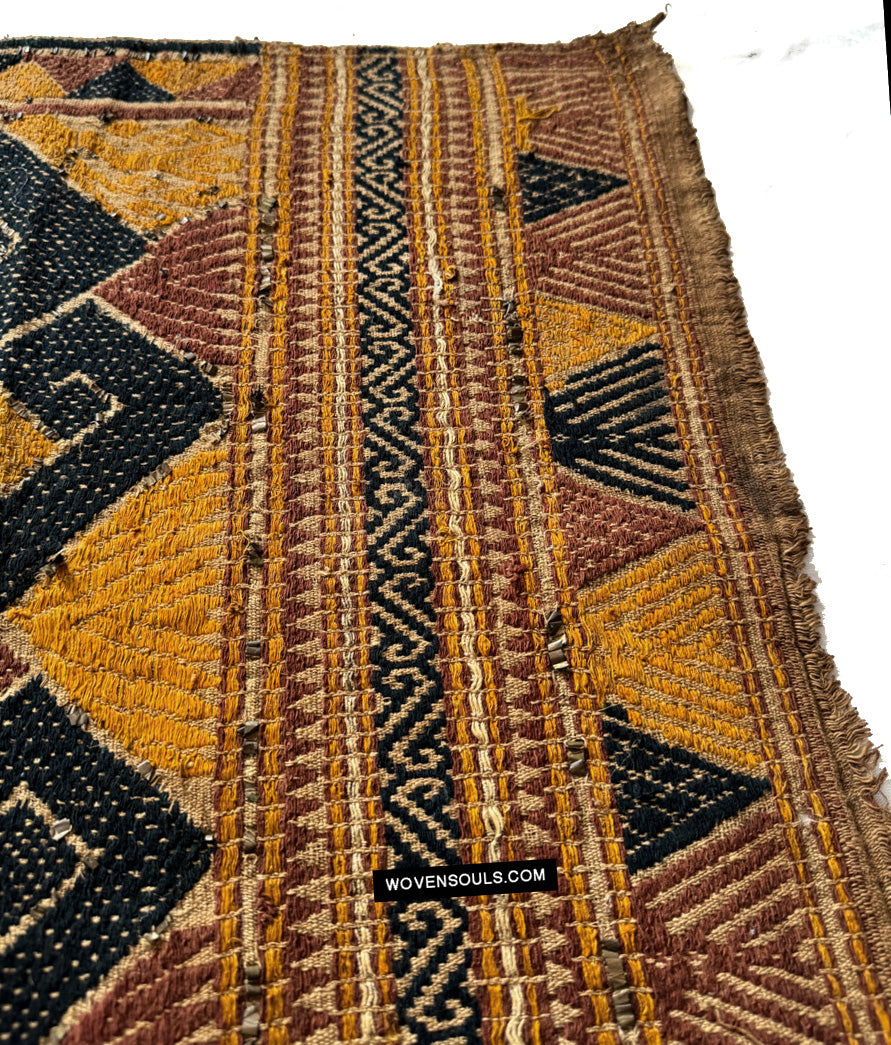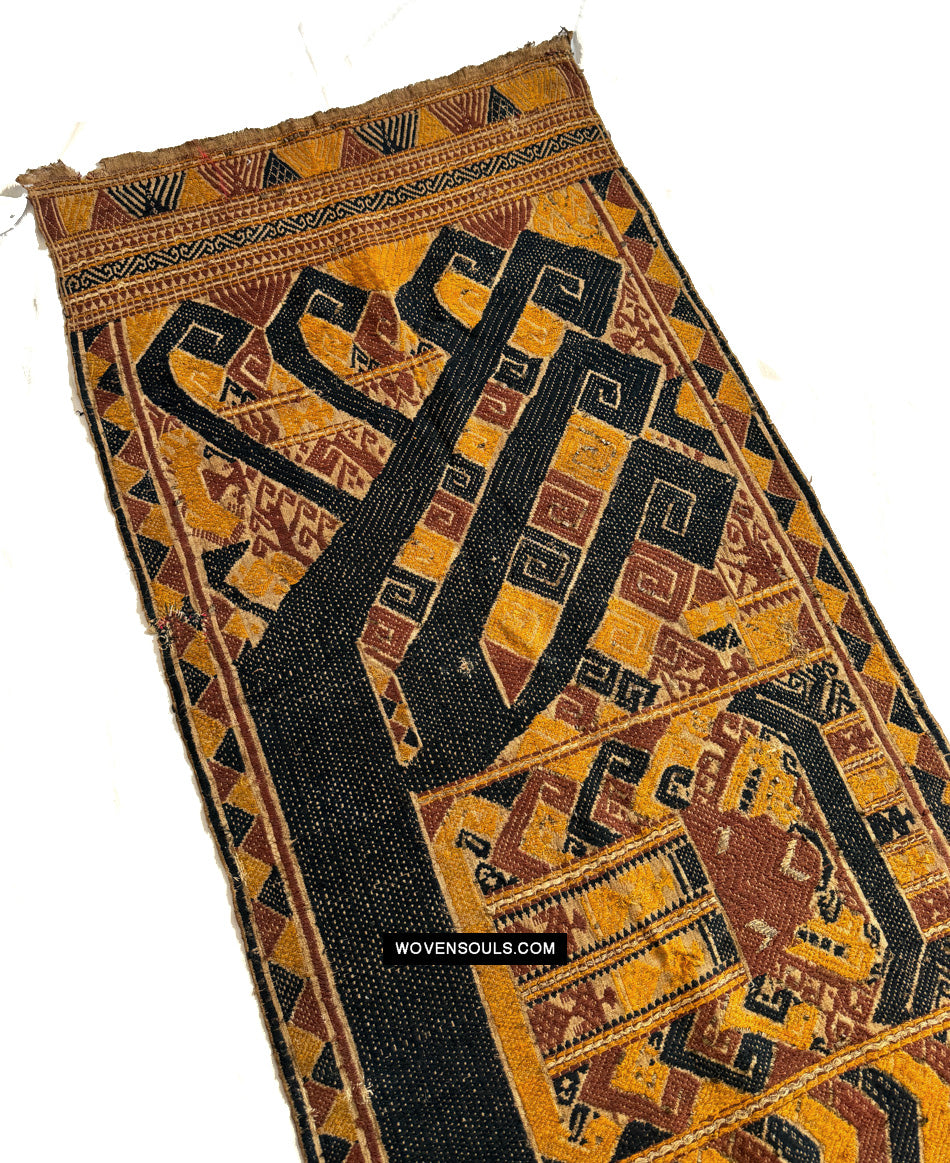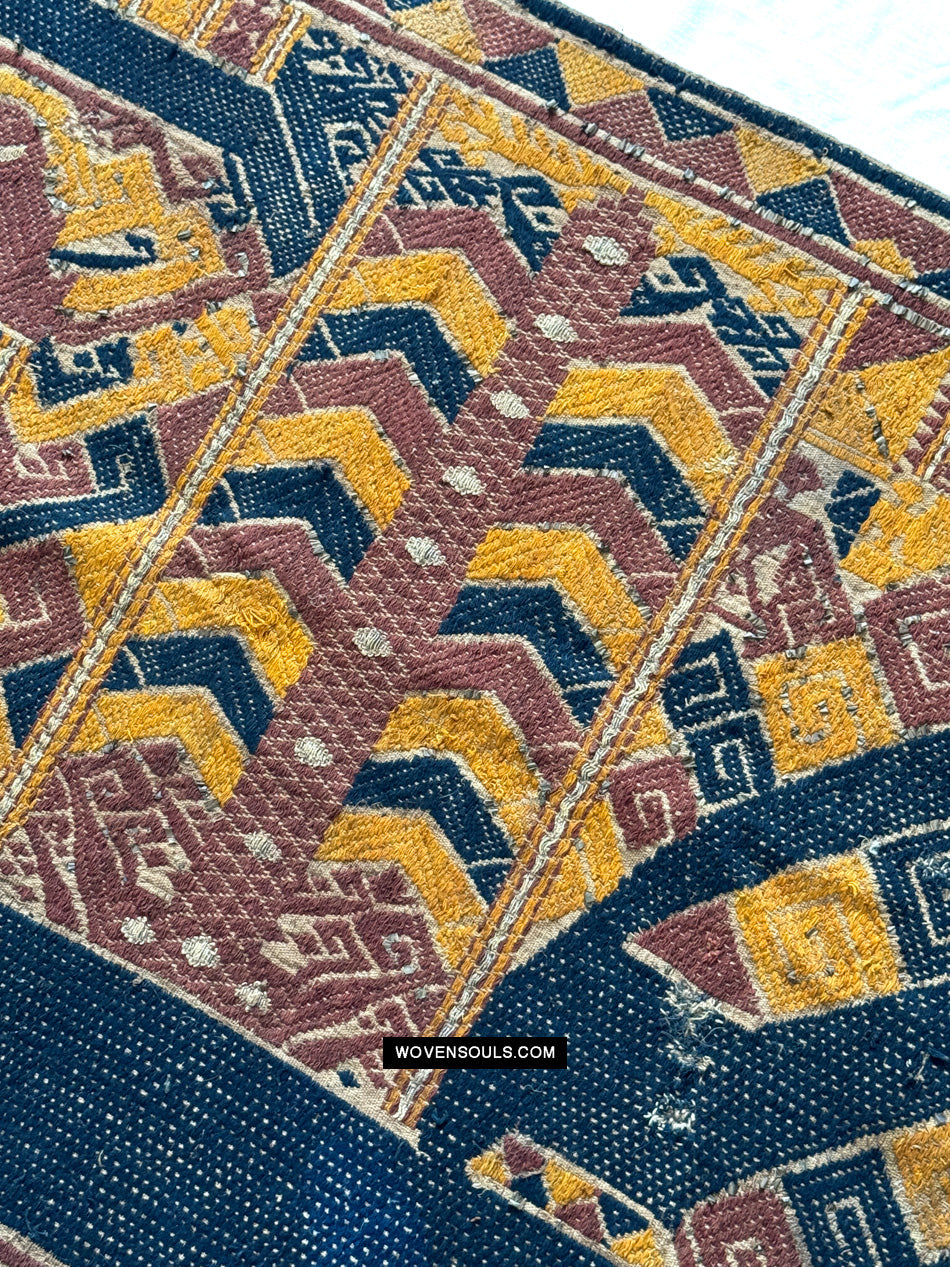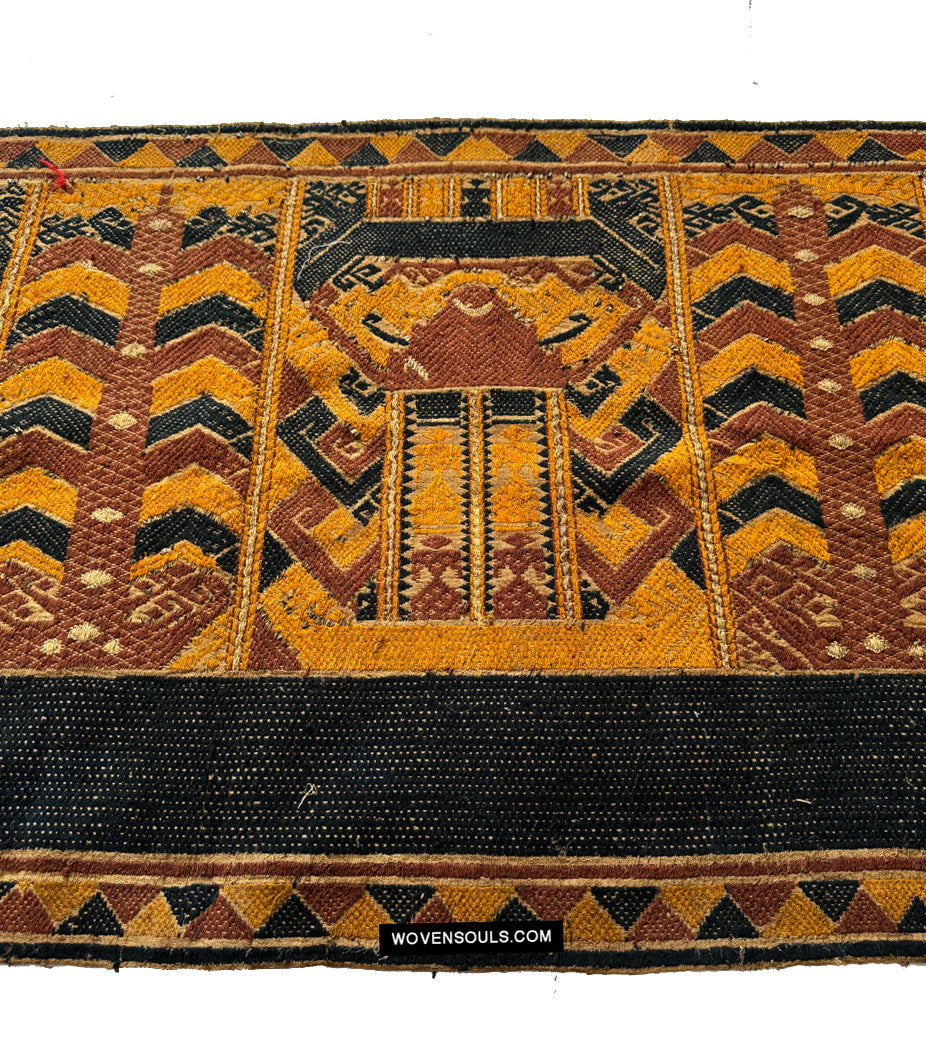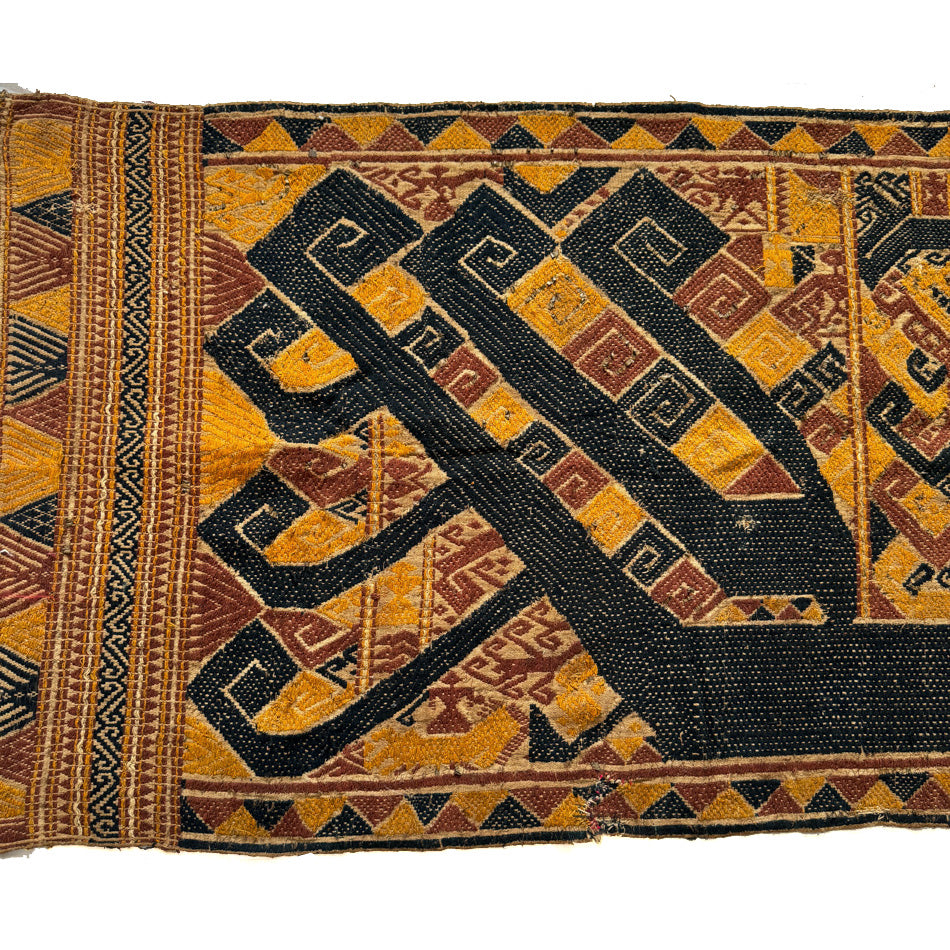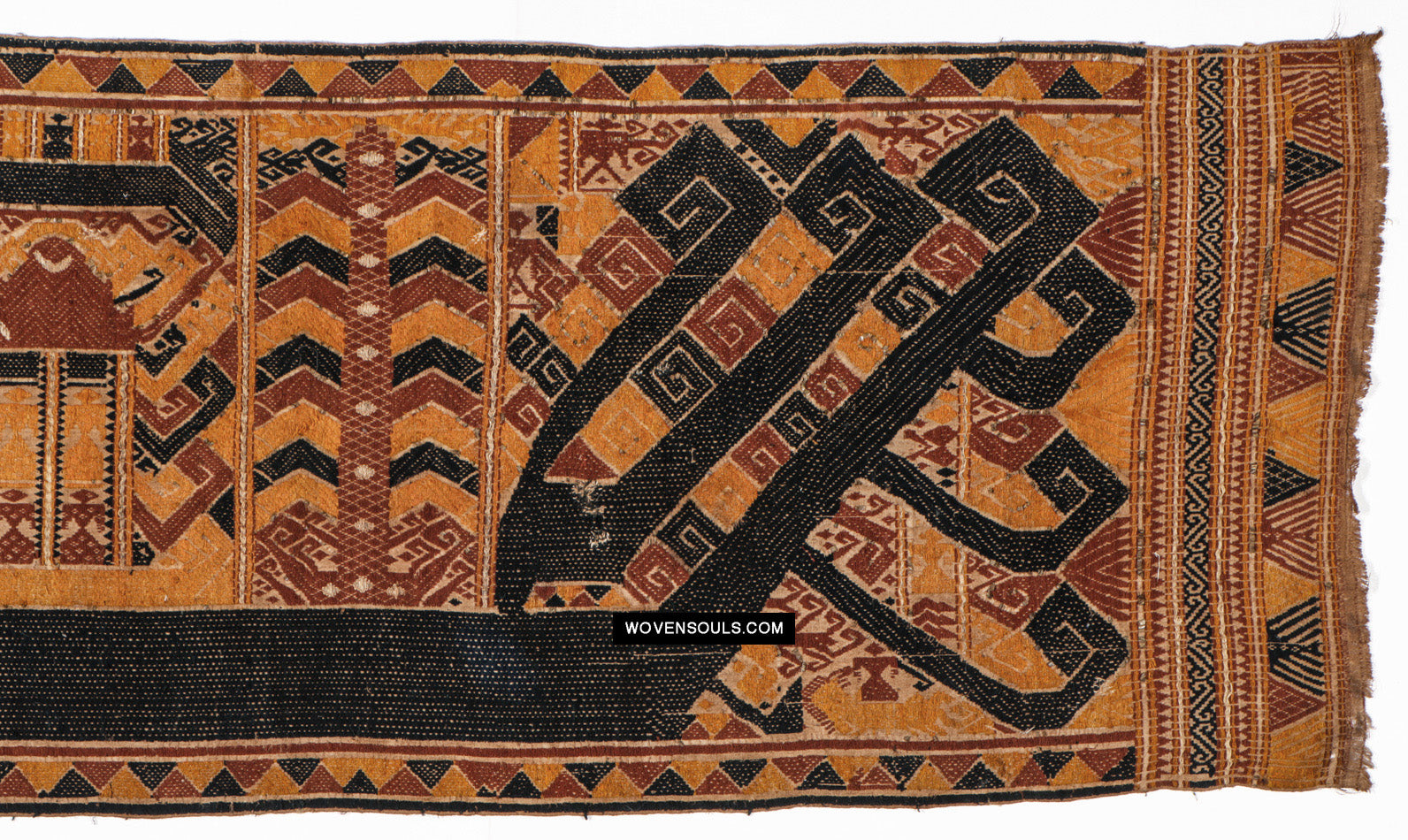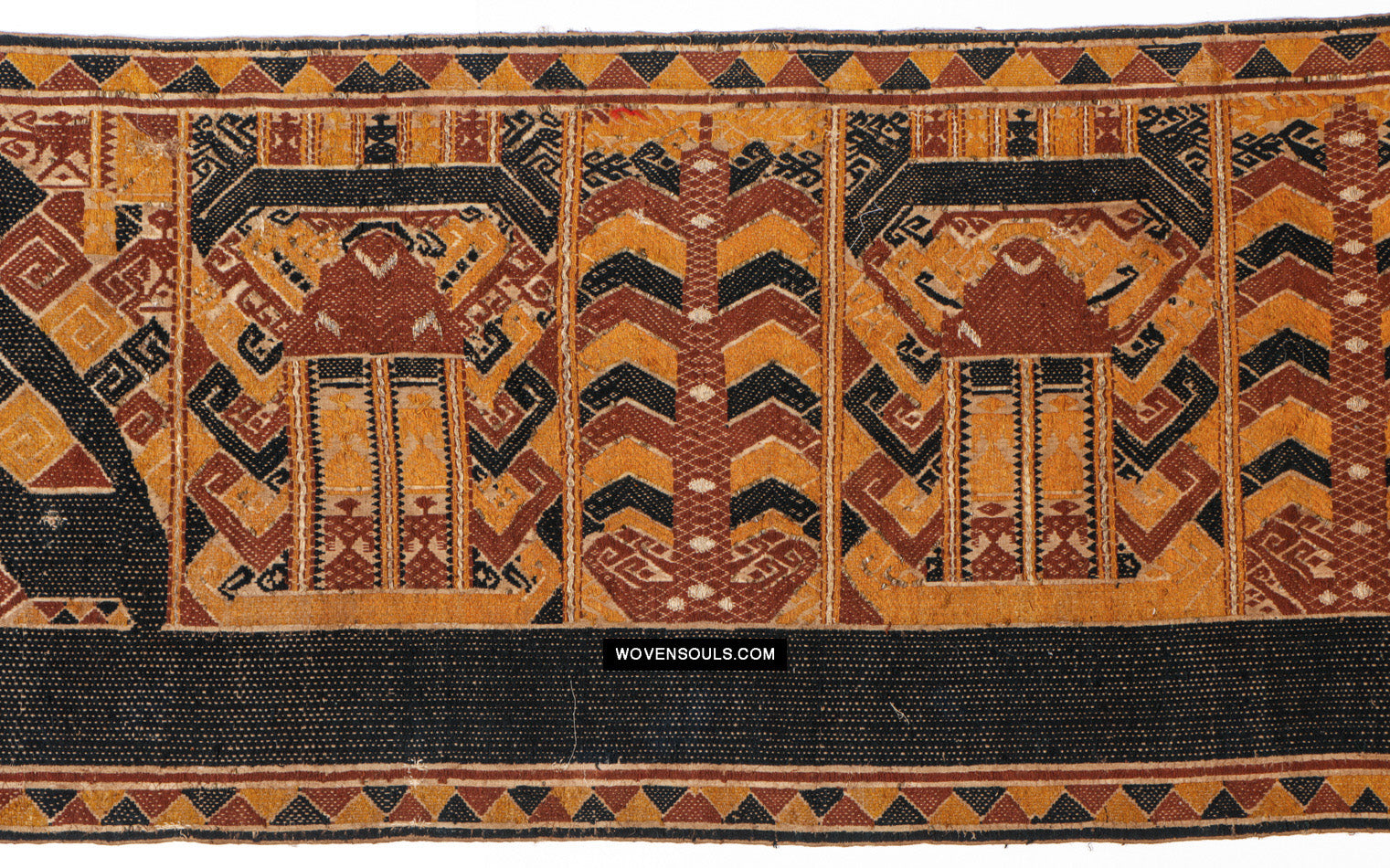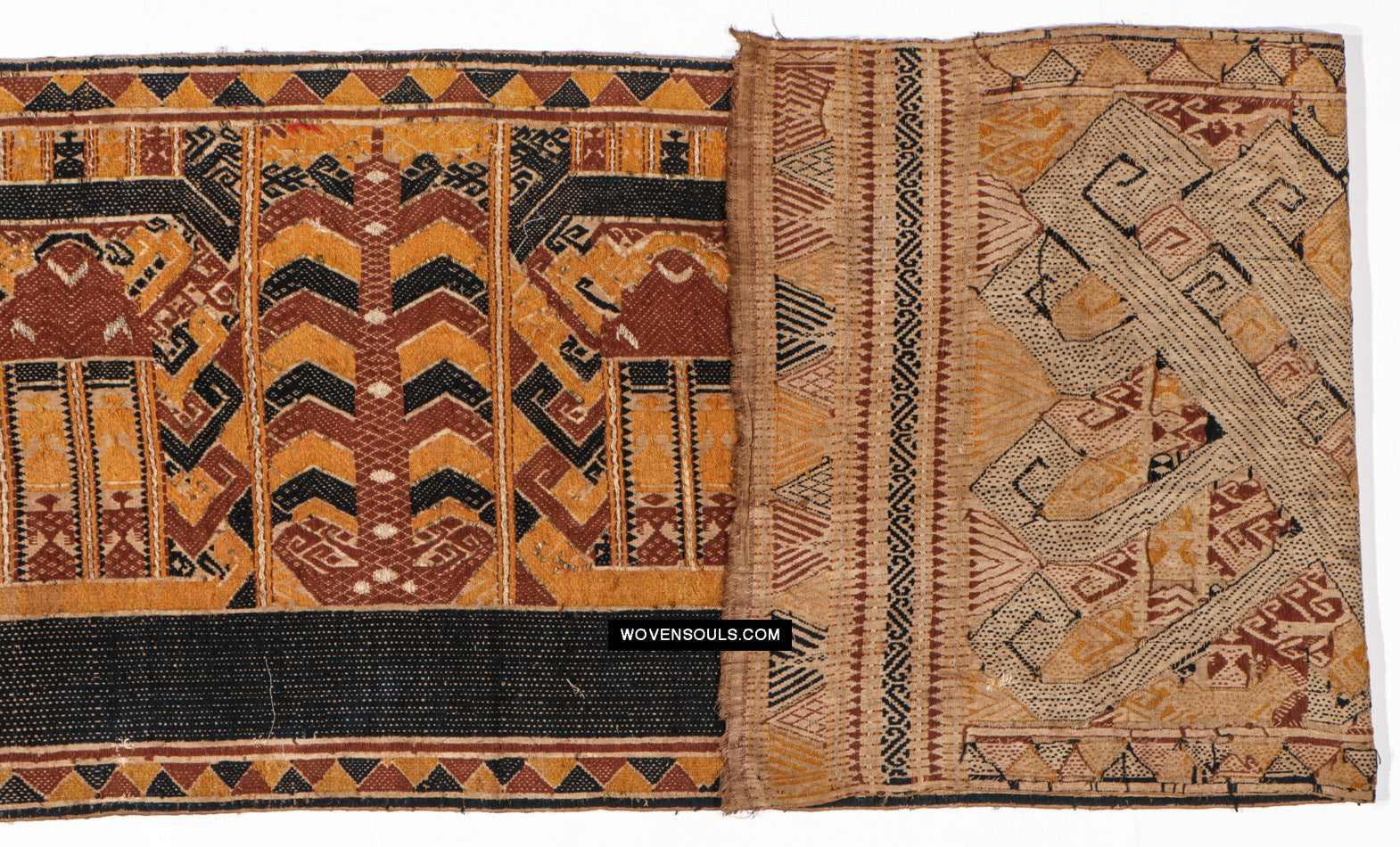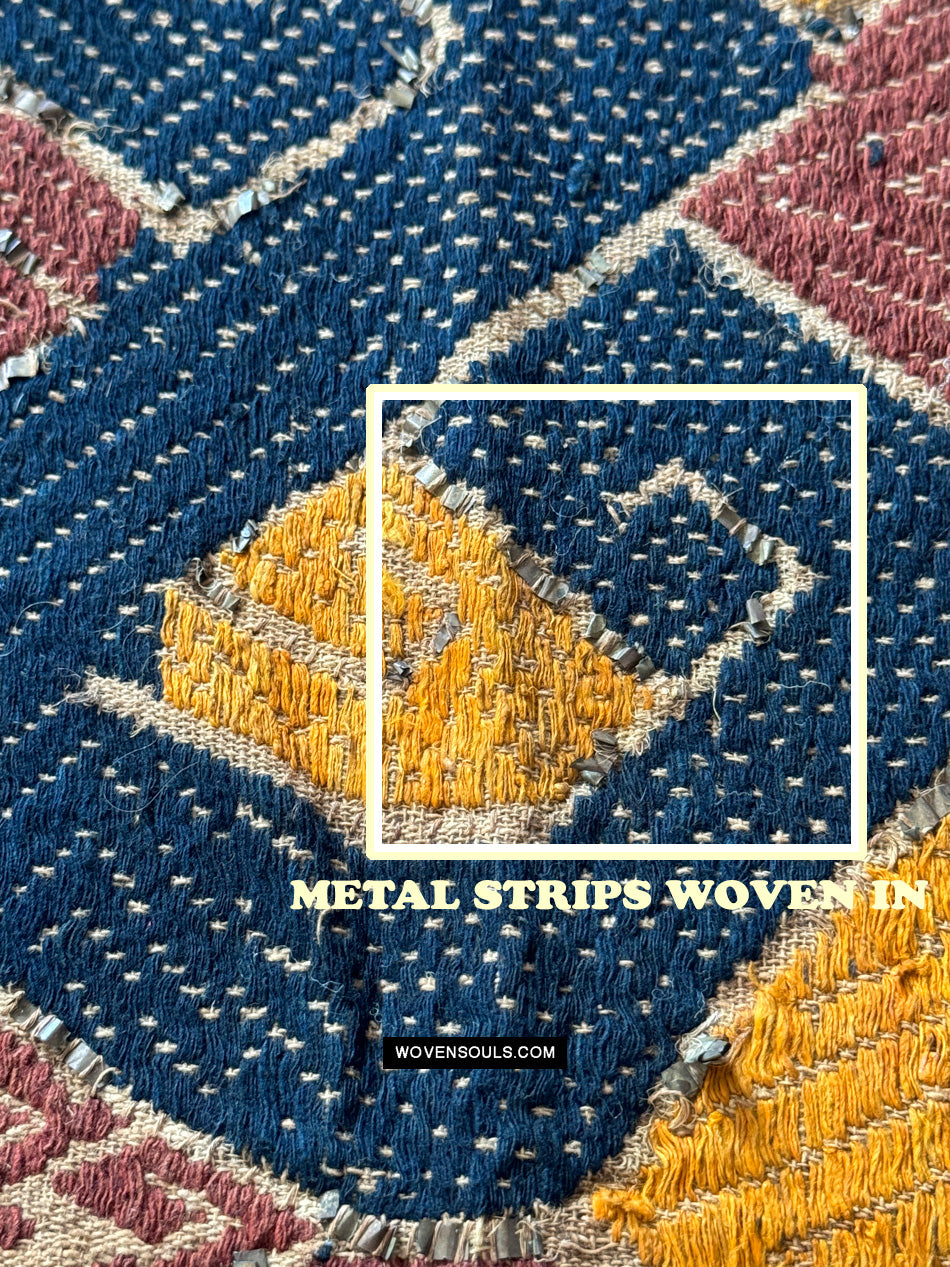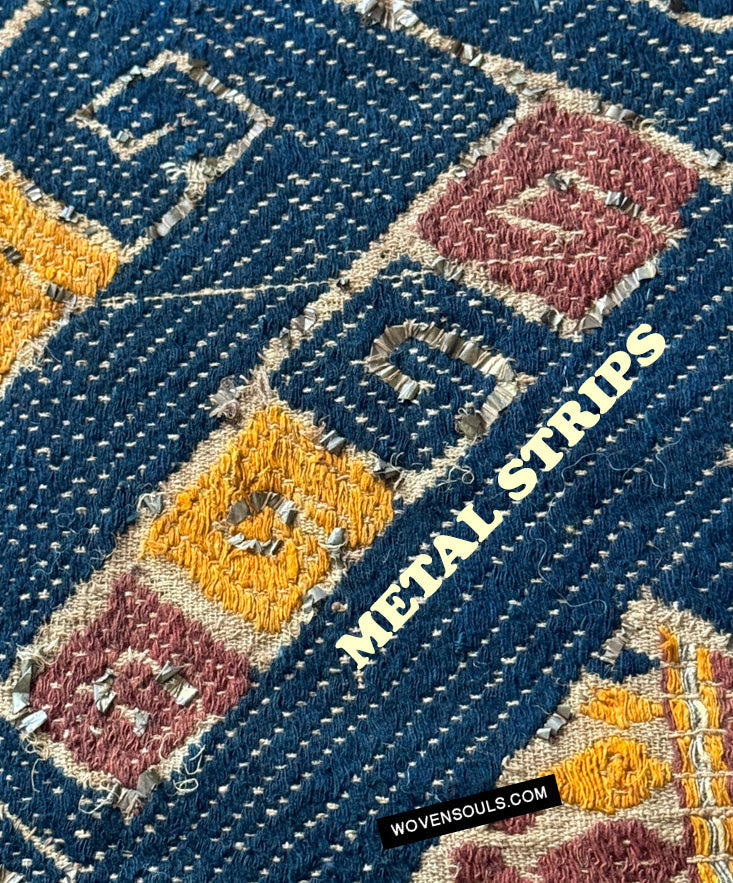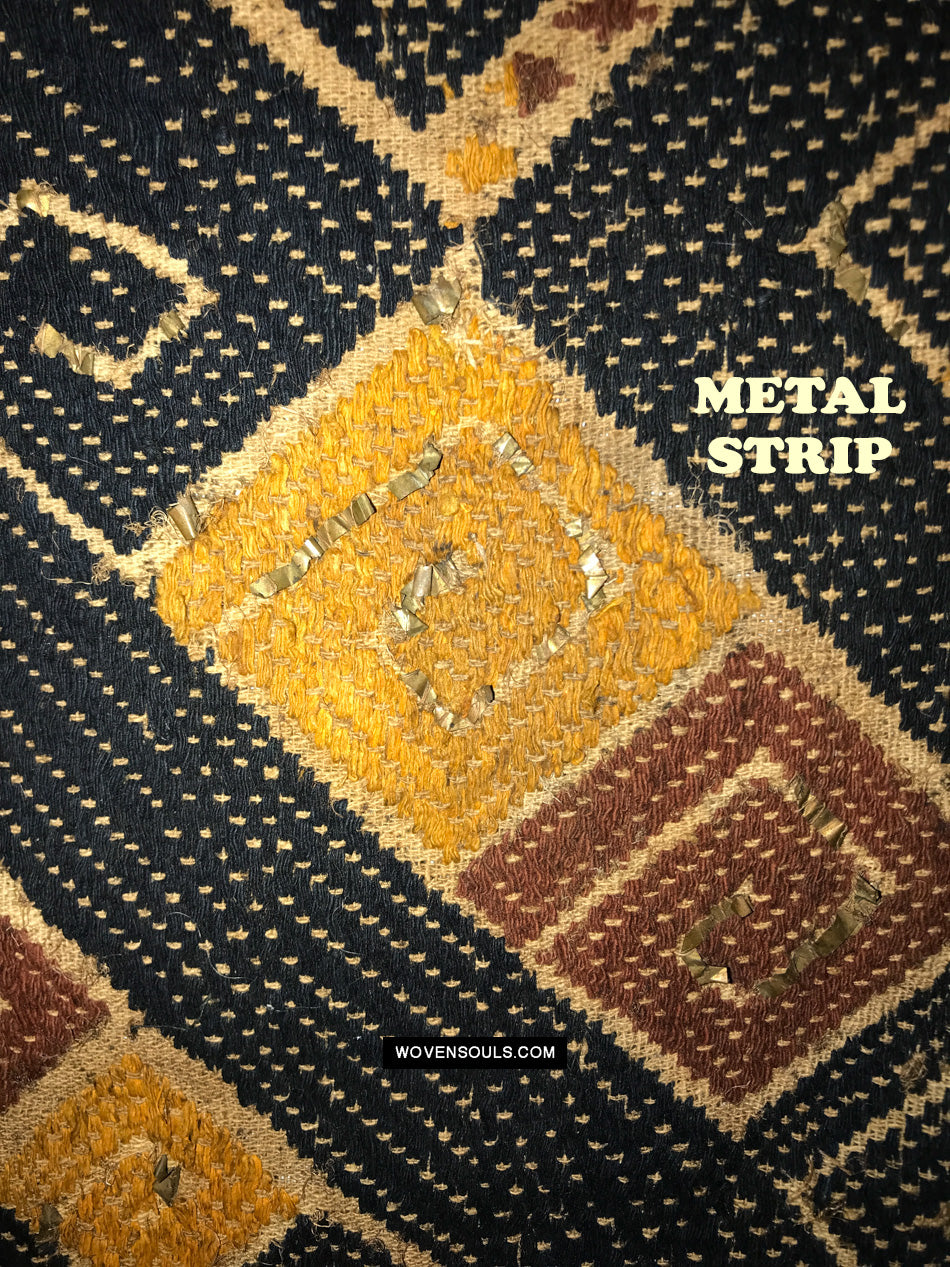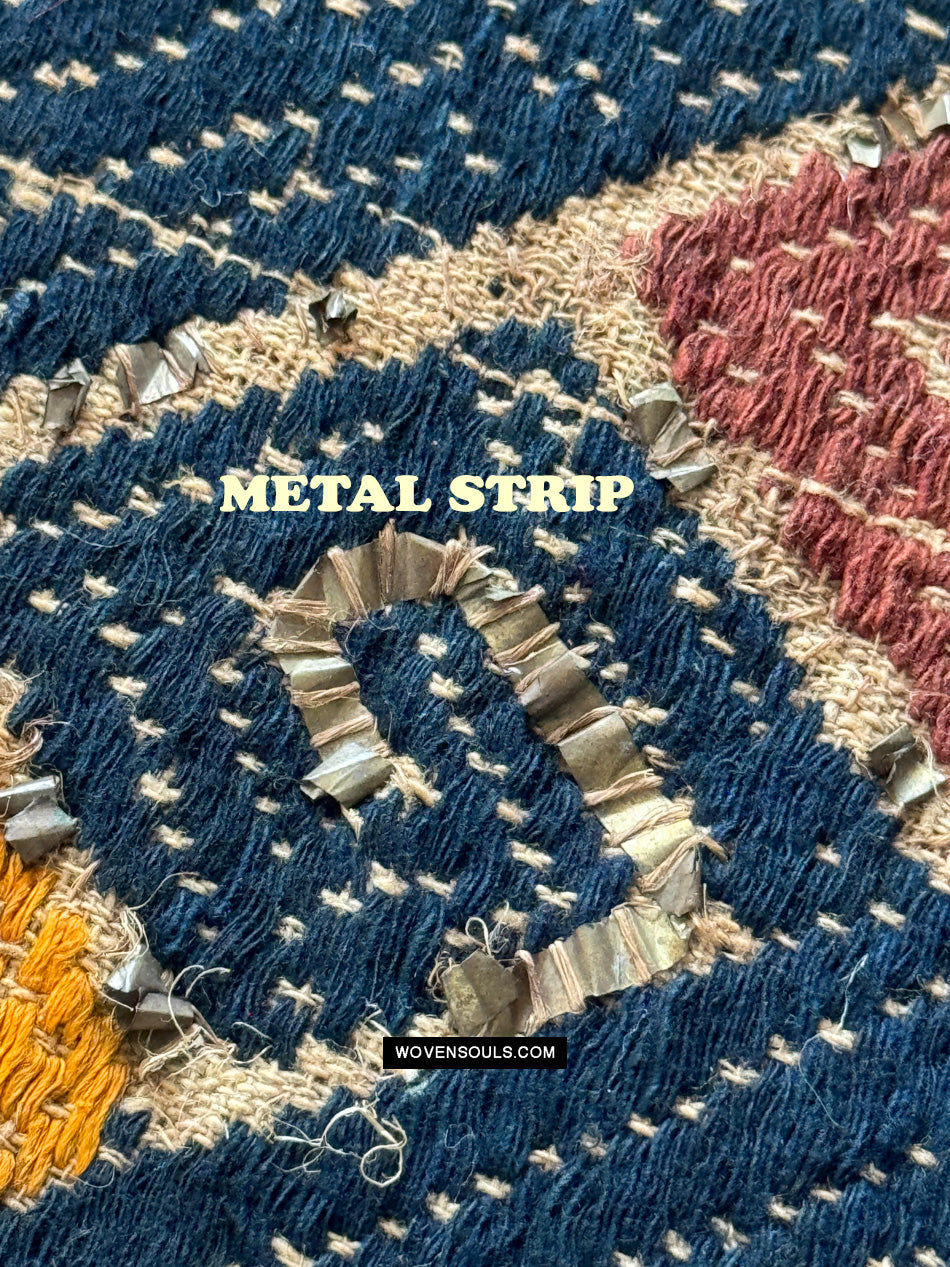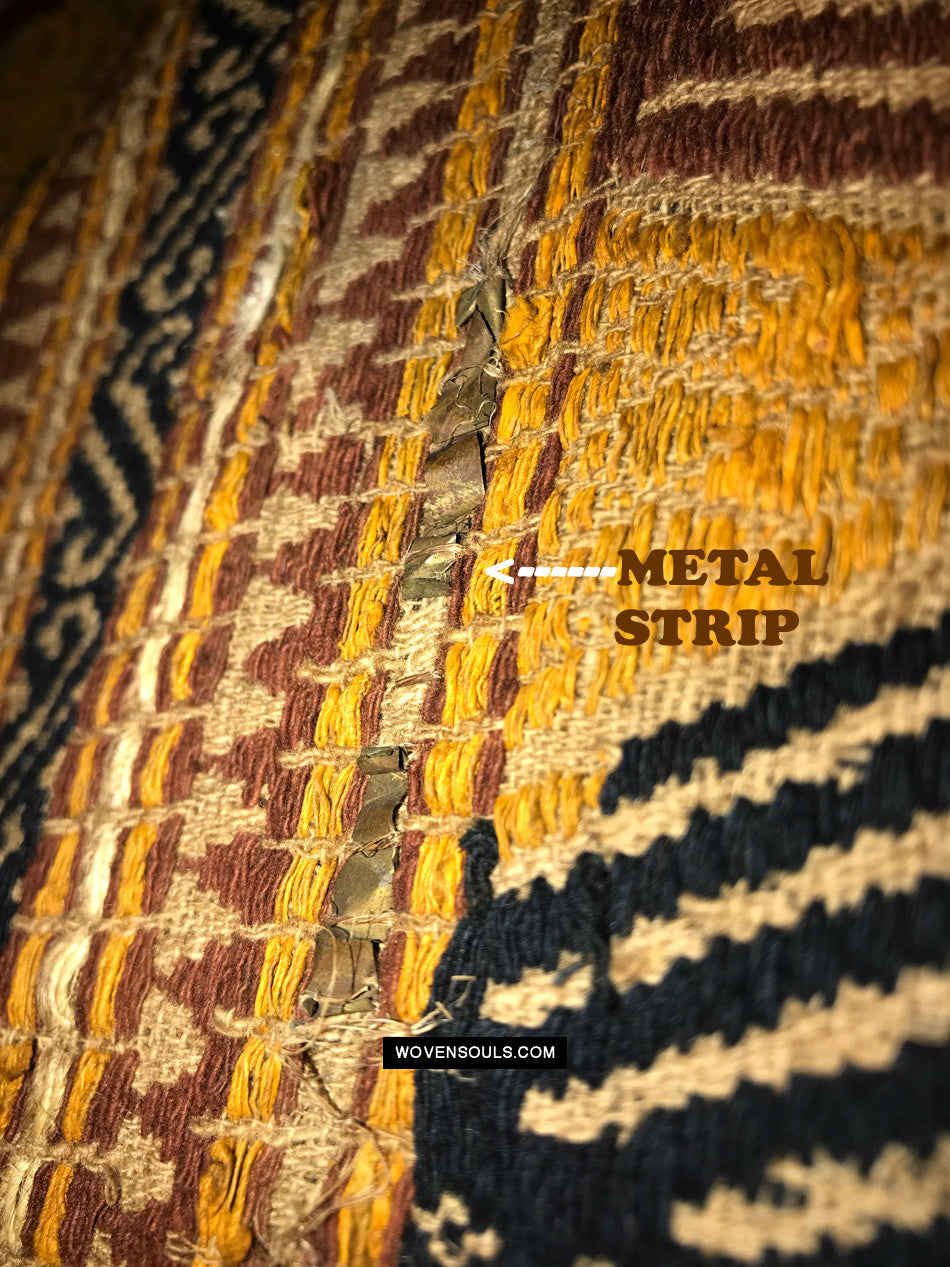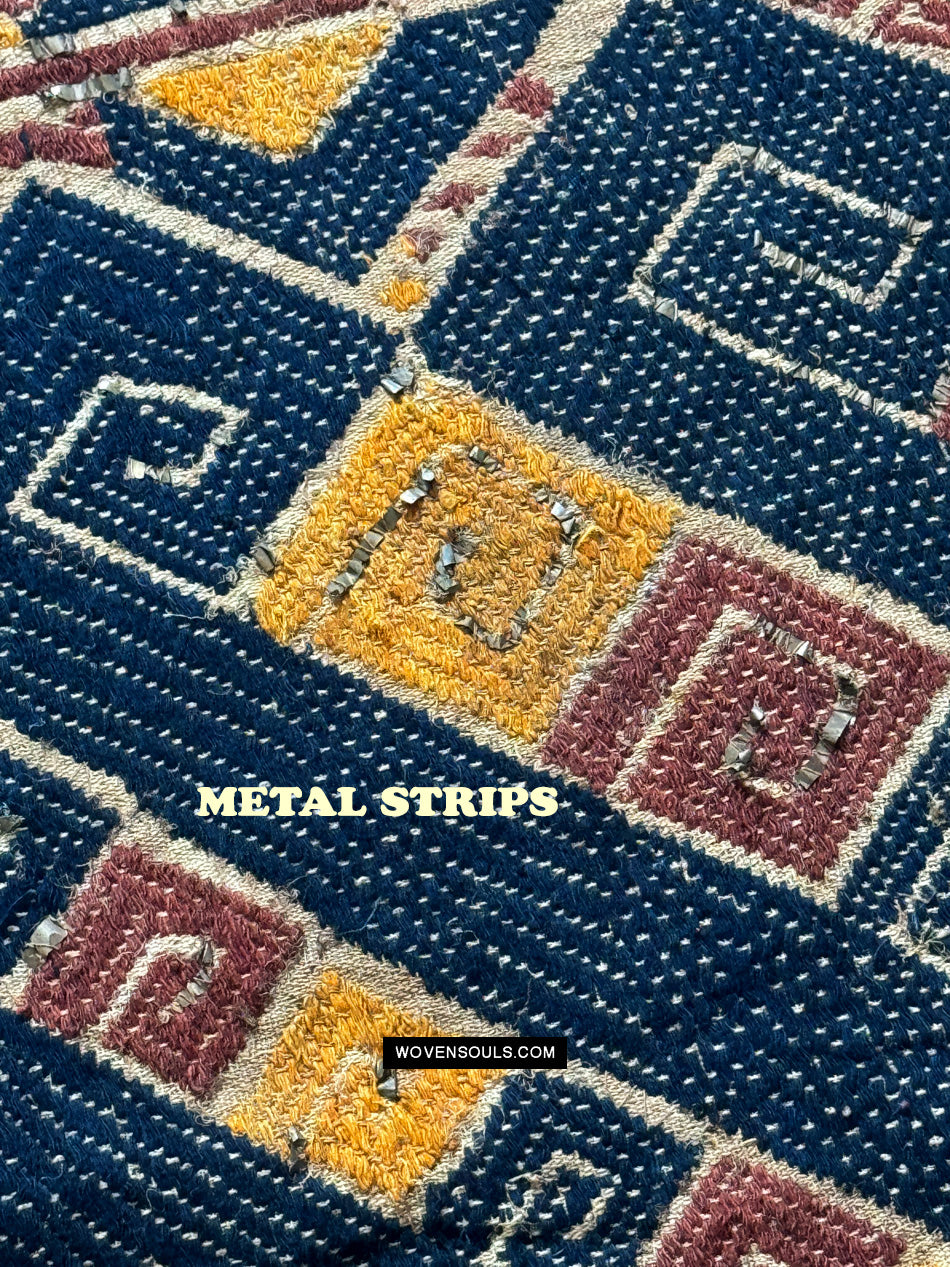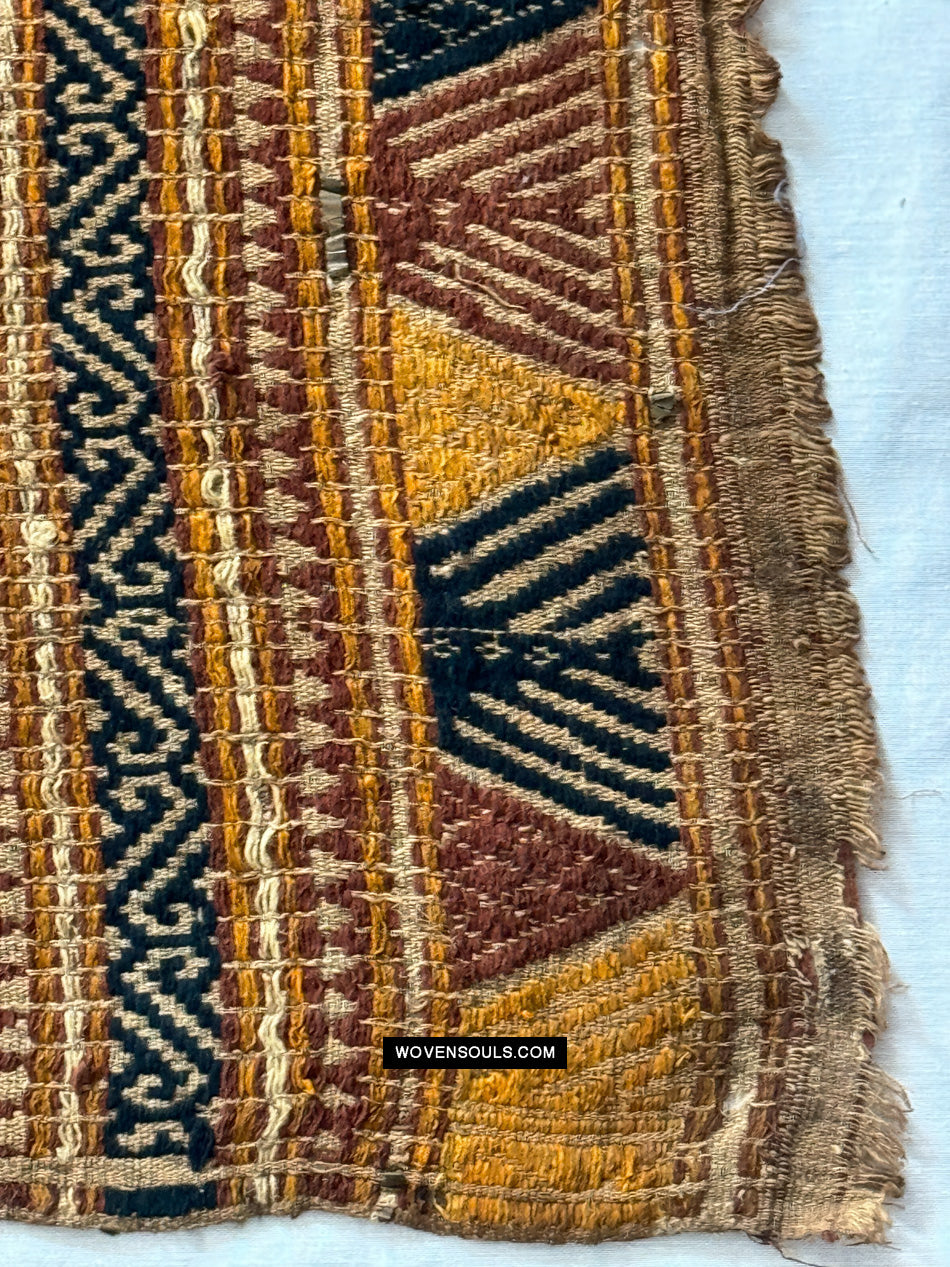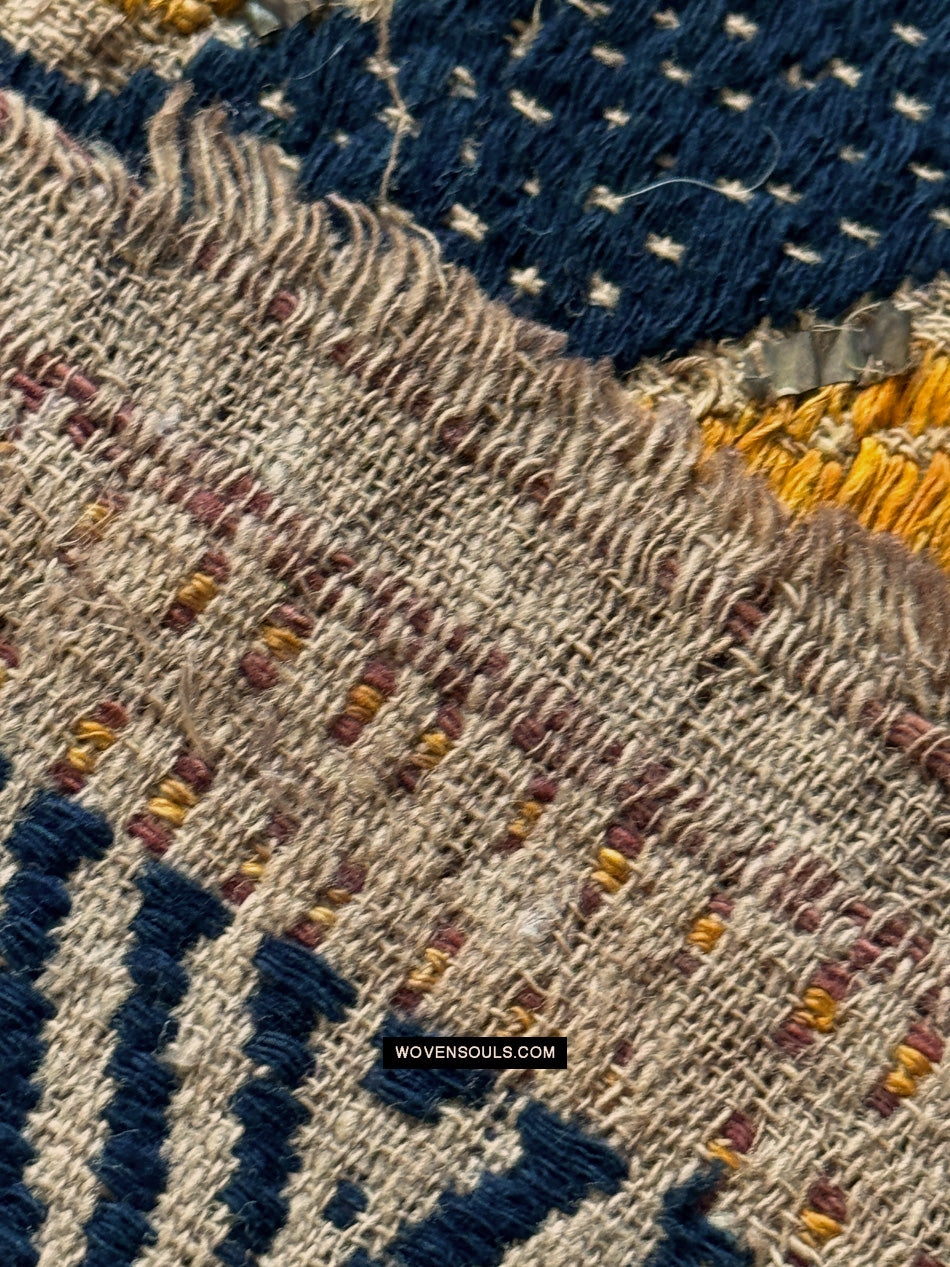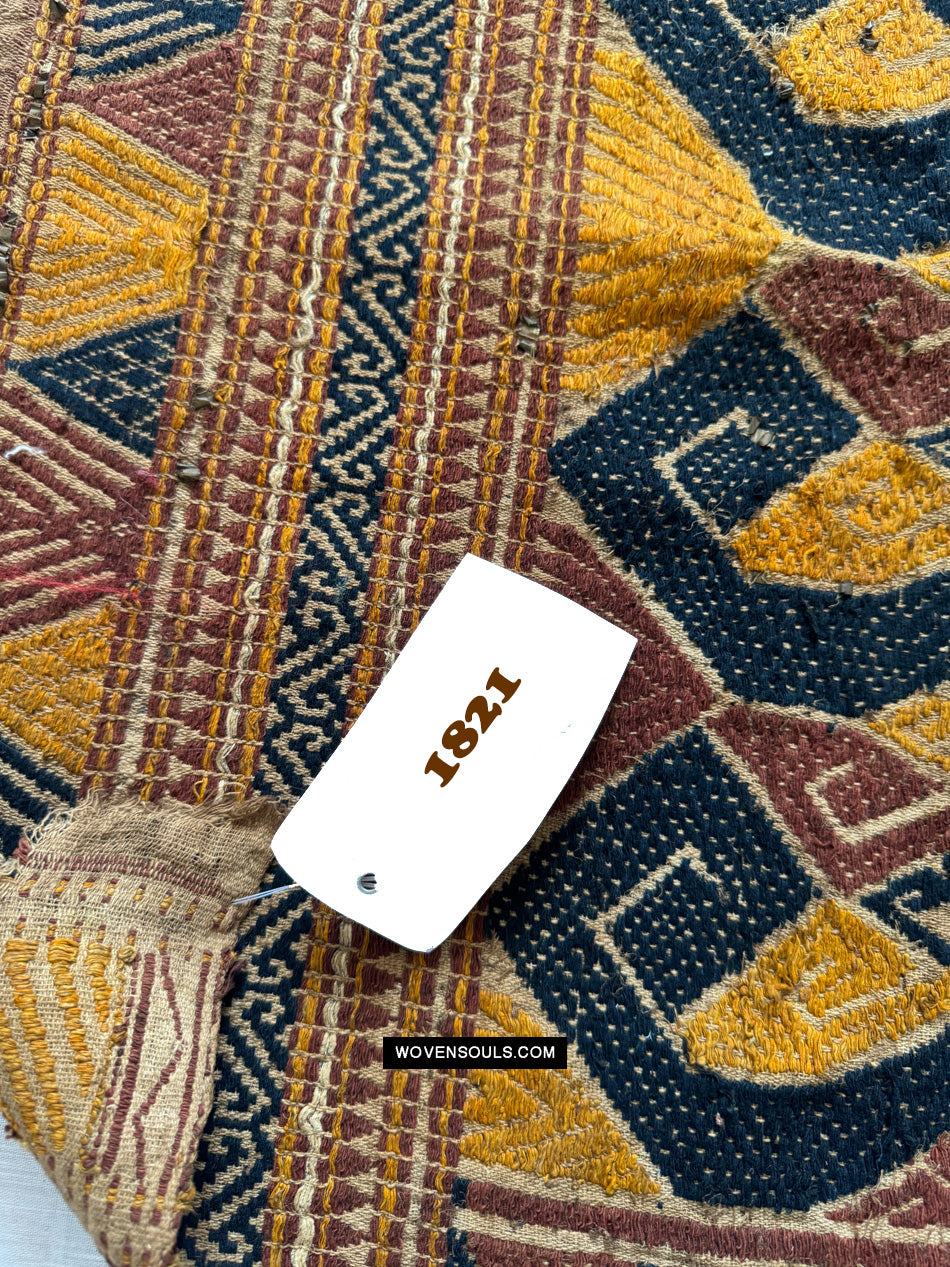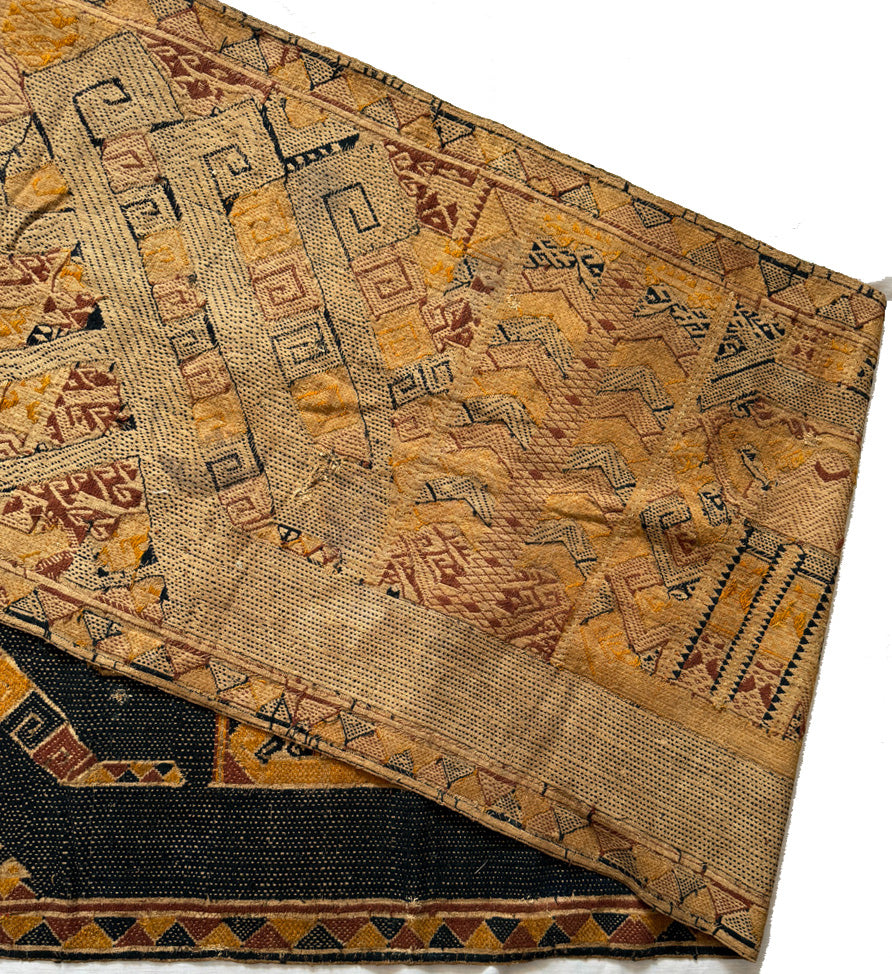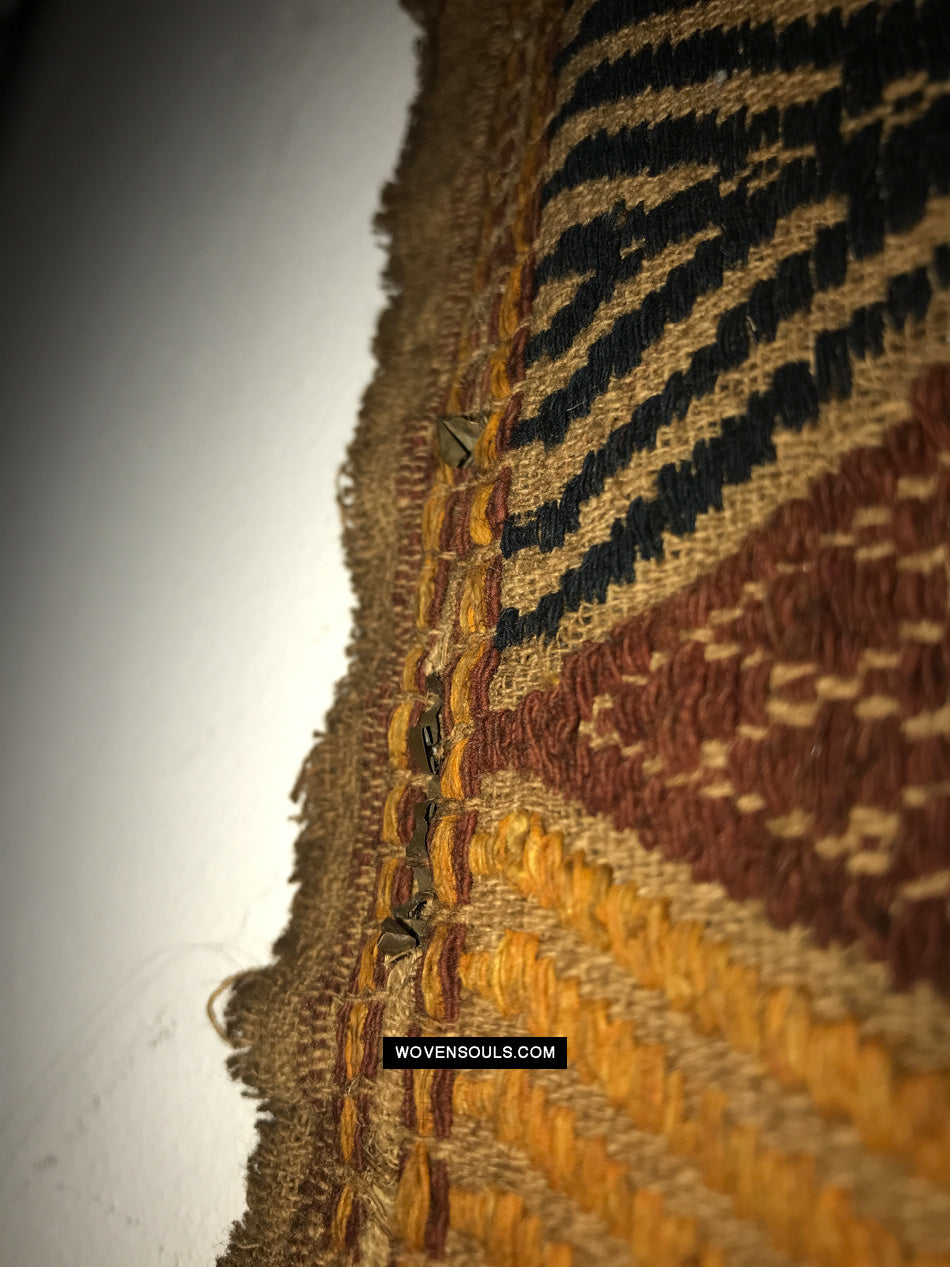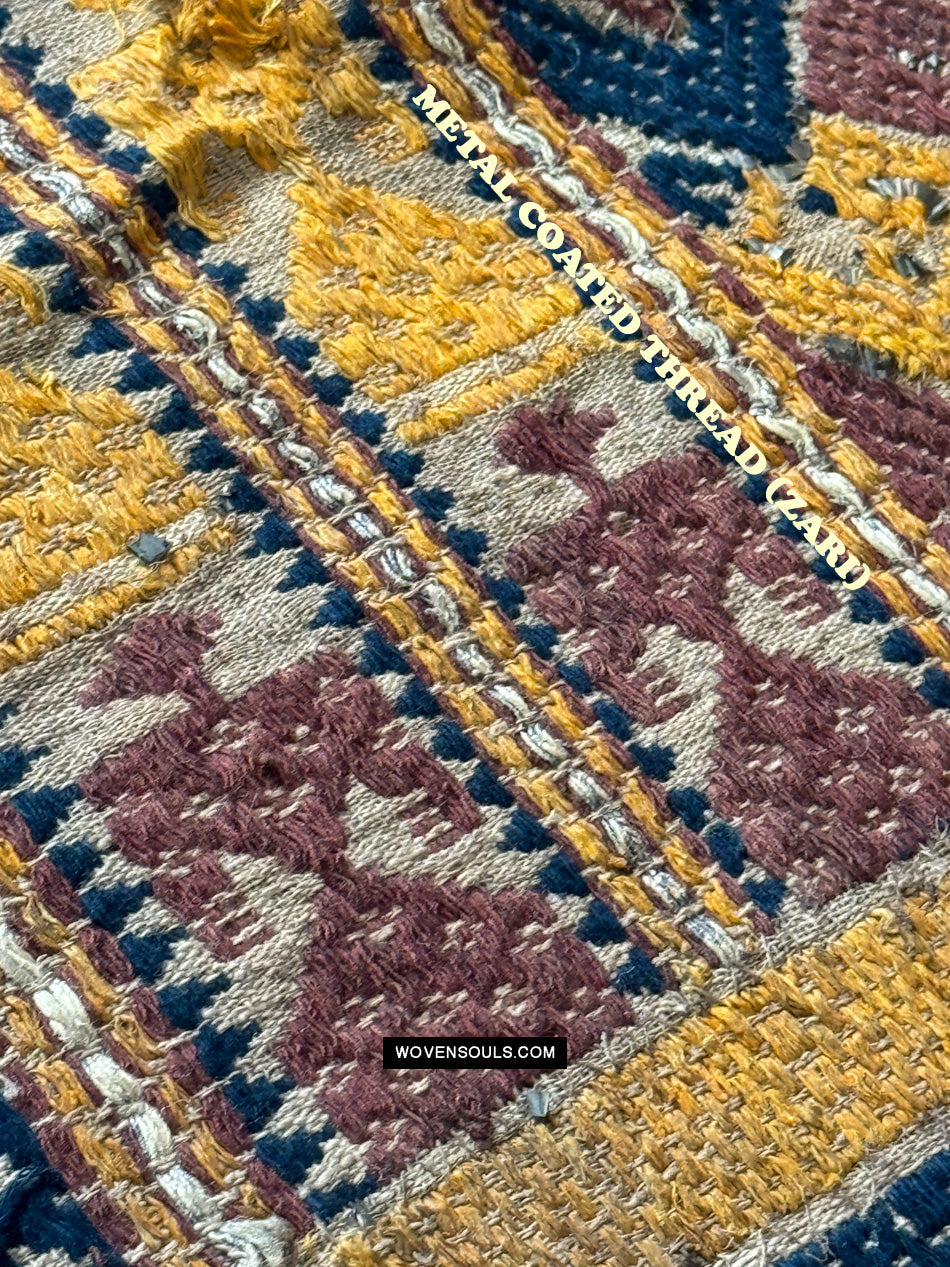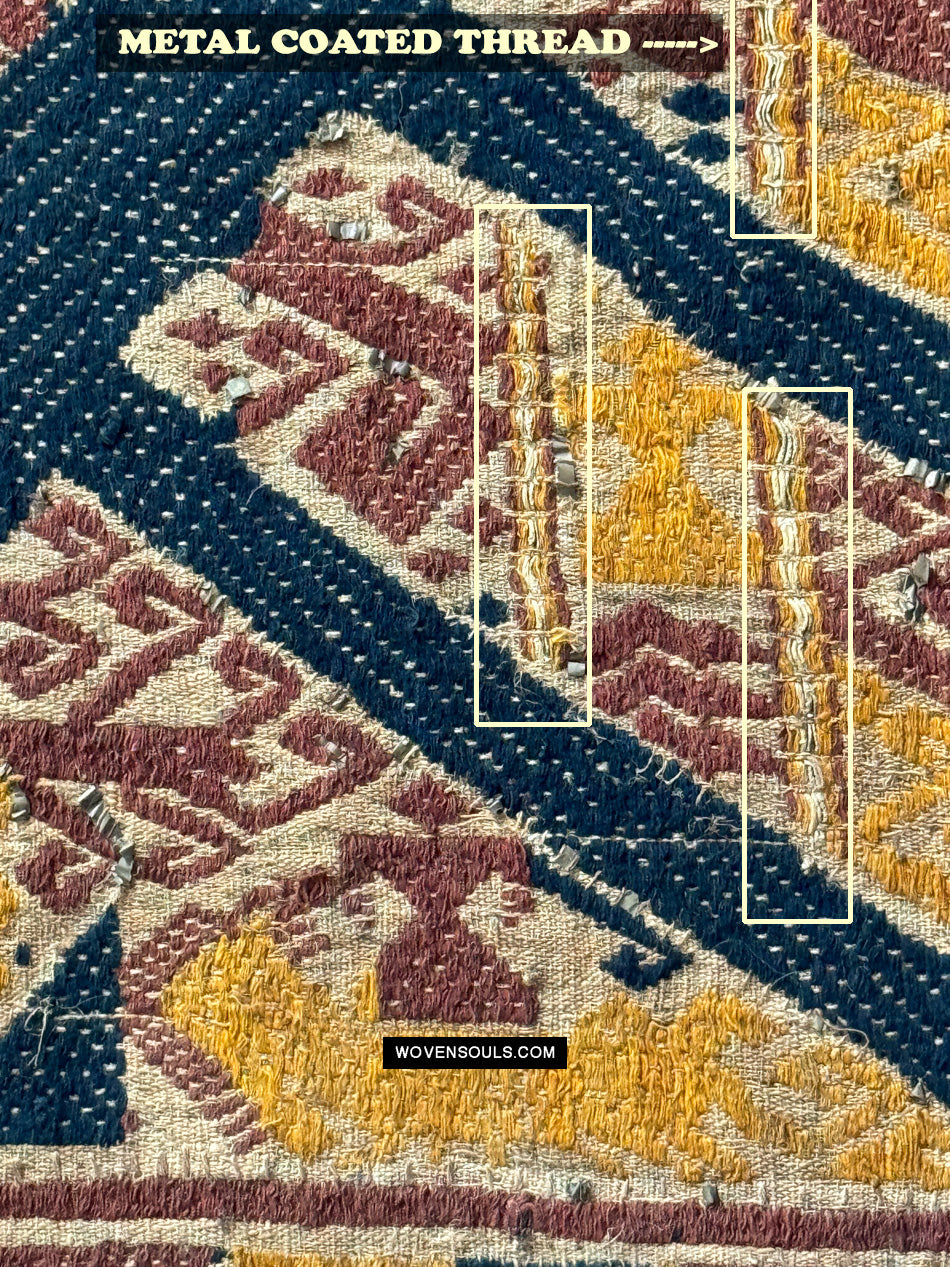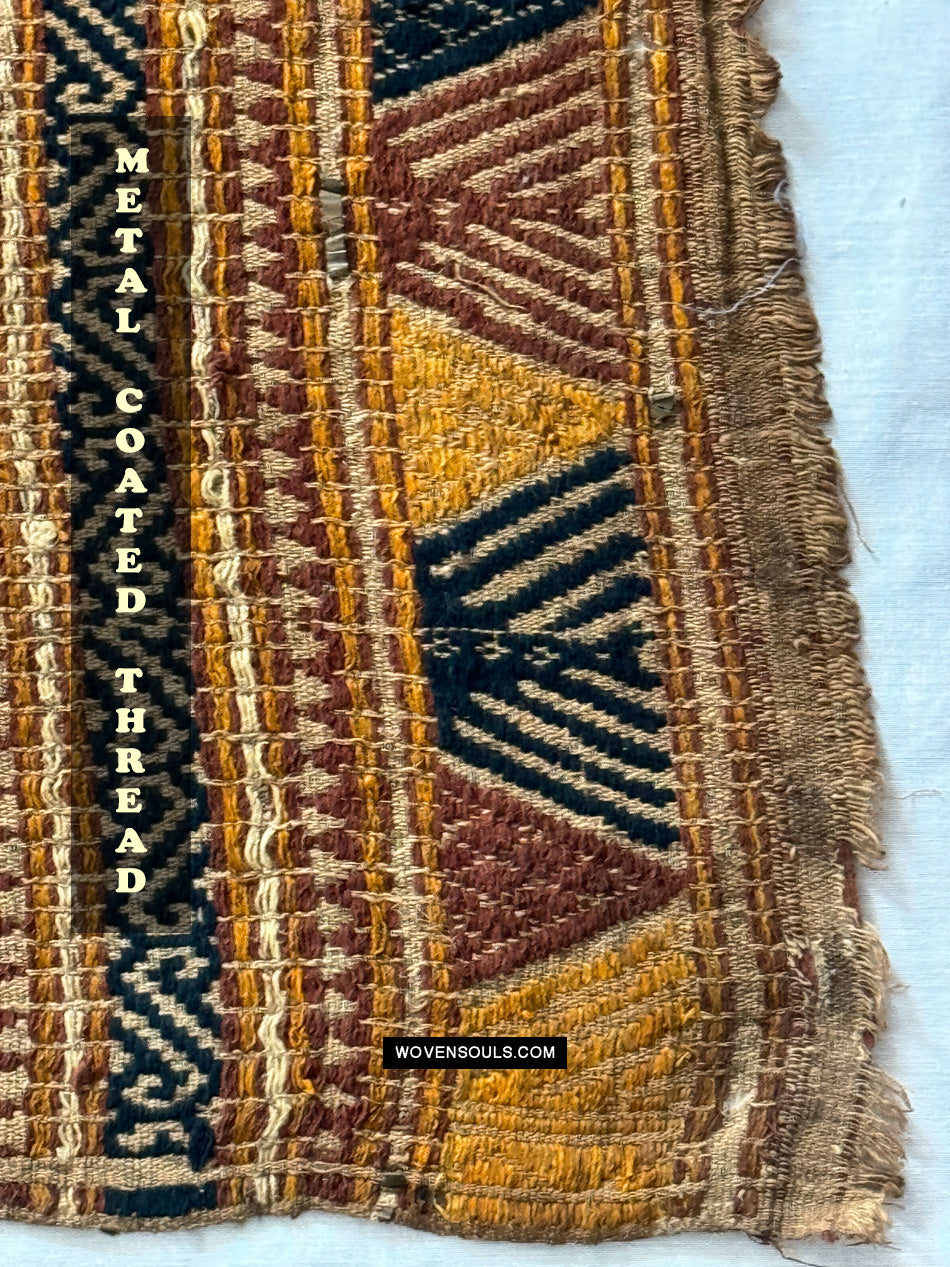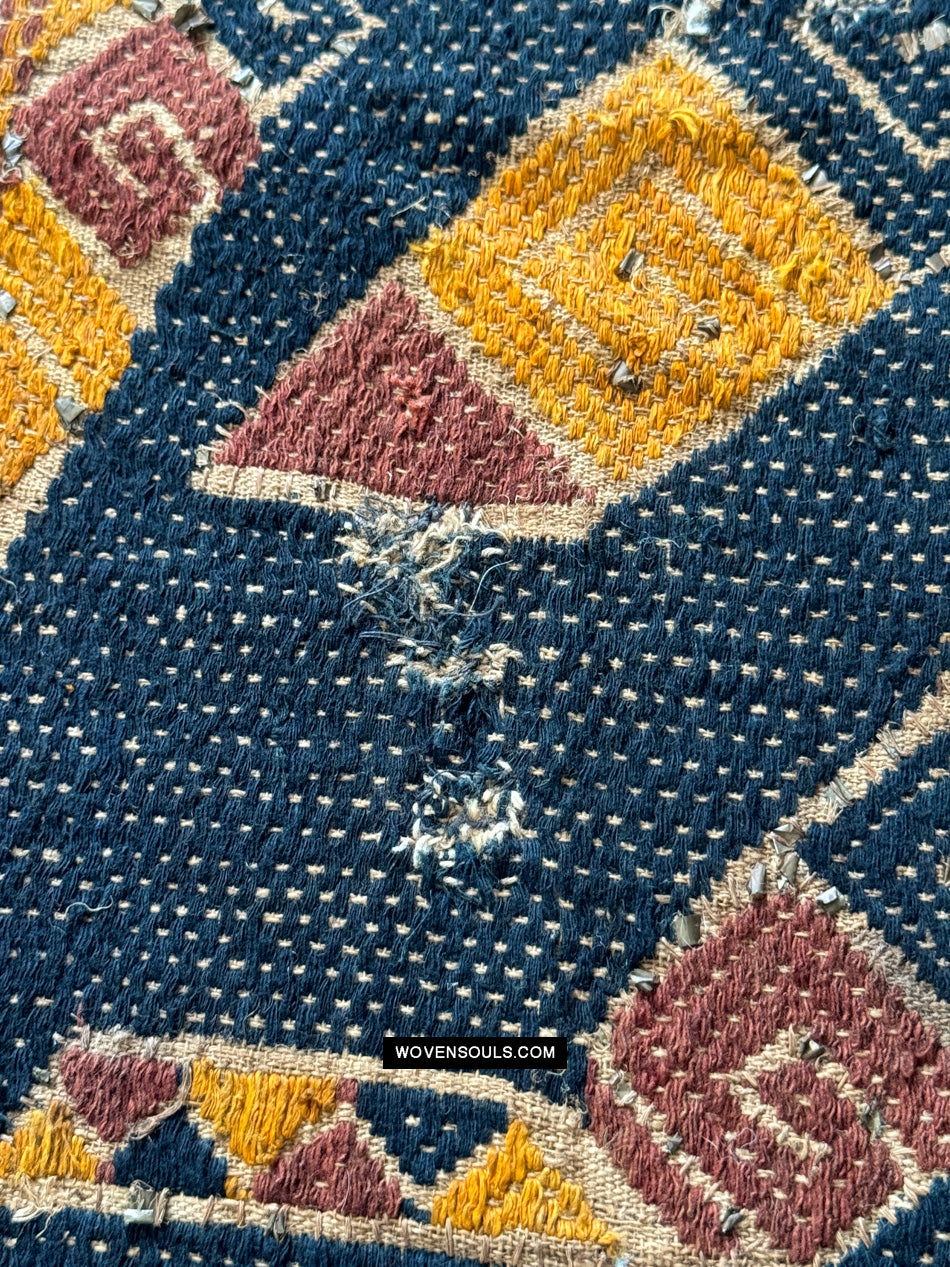1821 Rare Museum Quality Antique Palepai Sumatran Textile with Metal Strip Fragments
Rare Palepai Ship Cloth Weaving in Cotton, Silk & Metal wrapped yarn & Metal Strip Fragments!!!
Motifs of men, ships, dragons and more, laid out as a hierarchy.
Palepai cloths are rarer than Tampans as these family heirlooms were handed down to the head of the household, while Tampans were created for every son's family unit. So within an extended family, there could be only 1 Palepai but the number of Tampans could run into dozens.
And examples of weavings with metal strips woven in are extremely rare and perhaps never seen before in the long Palepai format. Much of the metal has been removed by the generations of previous owners - who probably valued the metal more than the textile itself - but significant amounts remain on the weaving allowing us to imagine the magnificence.
Note the close-up shots of the edges - which is where the yarn reveals itself. The unevenness of thread size and the weaving suggest the rustic origins.
The yellow thread appears to be silk.
Such cloths were not used as much as their smaller square counterparts and are always in overall good condition - having only been exhibited on the walls of the home (unlike Tampans that may be used as food covers or seat covers and are subject to greater stress).
Estimated to be from the mid 1800s or earlier.
8'2'' x 2'0'' (249 x 61 cm)
Has several small repairs - more photos on request
In good condition overall.
Similar example on Sotheby's:Link
PALEPAIS ARE VERY RARE TEXTILES AND ALMOST IMPOSSIBLE TO COME BY
***
This item has spent a lifetime being used for the purpose of its creation with the original artist/user. Signs of this life lived heartily may be present on the piece in the form of stains, thread loss, loose threads, holes, tears, color run and other imperfections. Therefore the condition must be assumed to be “not” perfect. More photos of such imperfections will be provided on request.
***
***
This item has spent a lifetime being used for the purpose of its creation with the original artist/user. Signs of this life lived heartily may be present on the piece in the form of stains, thread loss, loose threads, holes, tears, color run and other imperfections. Therefore the condition must be assumed to be “not” perfect. More photos of such imperfections will be provided on request.
***

